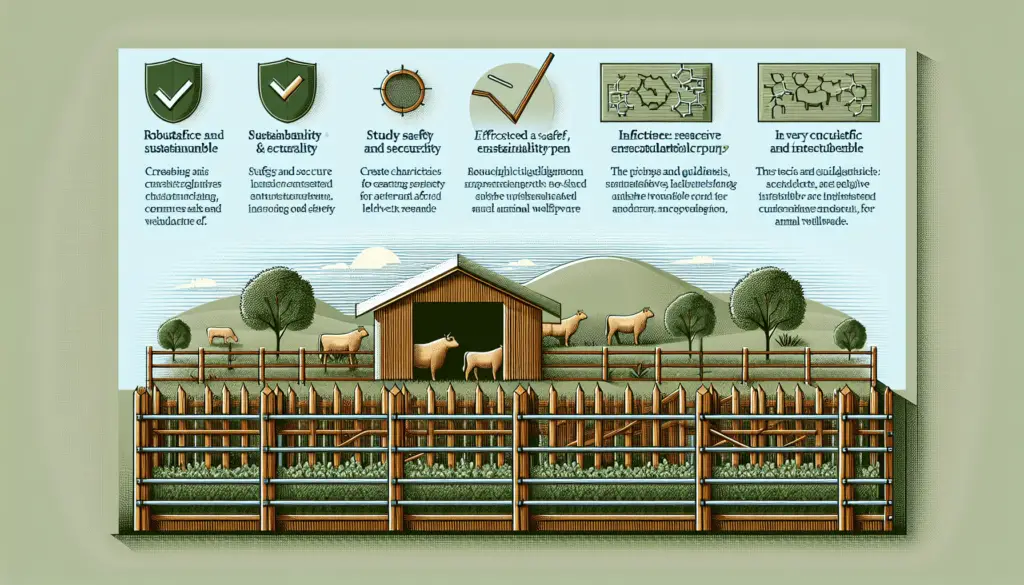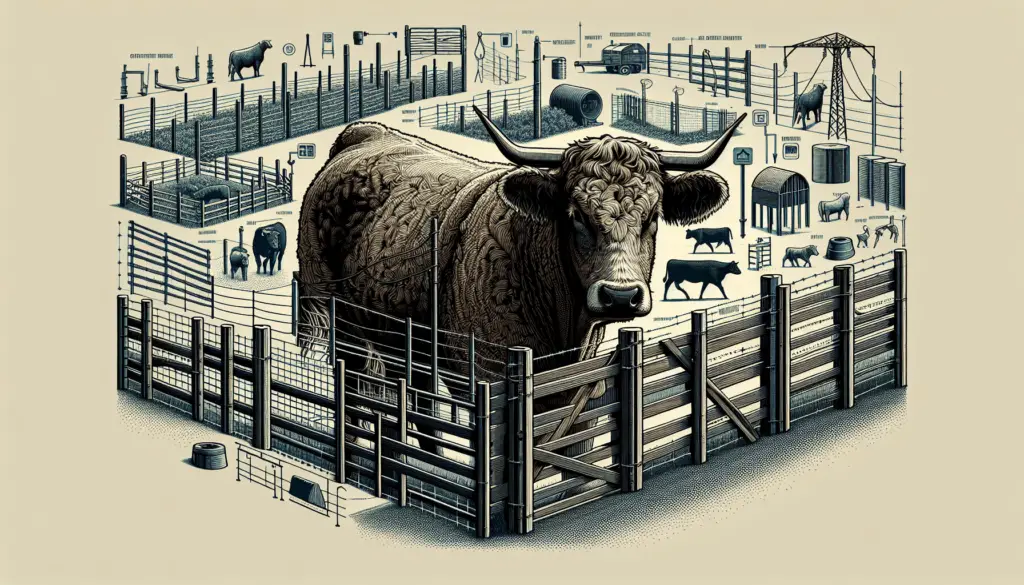Have you ever considered building your own livestock enclosure to ensure the safety and well-being of your animals? If so, you’re in the right place! In this guide, we’ll provide you with tips and tricks for constructing a secure and sustainable enclosure for your livestock. Let’s get started!

Planning Your Livestock Enclosure
When embarking on the journey of building a livestock enclosure, it’s crucial to start with a solid plan. Take the time to assess the needs of your animals, the size of your property, and any local regulations that may impact your construction. Planning ahead will save you time, money, and potential headaches down the road.
Tips for Planning Your Livestock Enclosure
- Consider the size and number of animals you will be housing to determine the appropriate size of your enclosure.
- Take into account the terrain of your property and how it may impact the layout and design of your enclosure.
- Check with your local zoning laws and regulations to ensure that your enclosure complies with any necessary permits or restrictions.
Building a secure and sustainable livestock enclosure begins with a solid plan. By taking the time to thoroughly plan out your project, you can ensure that your enclosure meets the needs of both your animals and your property.
Choosing the Right Materials
Selecting the right materials for your livestock enclosure is essential for ensuring its longevity and security. From fencing to gates to shelter structures, every component of your enclosure should be durable, weather-resistant, and safe for your animals.
Tips for Choosing the Right Materials
- Opt for high-quality fencing materials such as welded wire, chain link, or electric fencing to ensure security and longevity.
- Consider using pressure-treated wood for posts and framing to prevent rot and decay.
- Invest in weather-resistant roofing materials for any shelters or structures within your enclosure.
By choosing the right materials for your livestock enclosure, you can create a secure and sustainable environment for your animals to thrive.
Building Strong Fencing
Fencing is a critical component of any livestock enclosure, as it serves as the primary barrier between your animals and potential predators or hazards. Building strong, durable fencing is essential for ensuring the safety and security of your livestock.
Tips for Building Strong Fencing
- Properly brace all corners and gate posts to prevent sagging or leaning over time.
- Utilize sturdy fencing materials such as steel T-posts, wooden posts, or composite materials for added durability.
- Make sure your fencing is tall enough to prevent animals from jumping or climbing over it.
Strong fencing is the backbone of a secure livestock enclosure. By investing in high-quality materials and proper construction techniques, you can create a safe and dependable barrier for your animals.
Providing Adequate Shelter
In addition to fencing, providing adequate shelter is crucial for the health and well-being of your livestock. Shelter structures can protect animals from extreme weather conditions, provide shade in hot climates, and offer a safe space for resting and nesting.
Tips for Providing Adequate Shelter
- Consider the specific needs of your animals when designing shelter structures, such as ventilation, insulation, and space requirements.
- Use durable materials such as metal roofing, pressure-treated wood, or UV-resistant fabrics to ensure longevity.
- Provide separate areas for feeding, resting, and nursing within your shelter structures for optimal comfort and functionality.
Adequate shelter is essential for the overall health and happiness of your livestock. By designing and constructing shelters that meet the specific needs of your animals, you can create a safe and comfortable environment for them to thrive.

Implementing Proper Drainage
Proper drainage is often overlooked in livestock enclosures but is essential for preventing water buildup, erosion, and potential health hazards for your animals. Implementing effective drainage systems can help maintain the integrity of your enclosure and ensure the health and safety of your livestock.
Tips for Implementing Proper Drainage
- Grade the land surrounding your enclosure to prevent water from pooling or flooding within the area.
- Install French drains, swales, or culverts to channel water away from high-traffic areas and prevent erosion.
- Avoid installing your livestock enclosure in low-lying or flood-prone areas to minimize water-related issues.
Effective drainage is key to maintaining a secure and sustainable livestock enclosure. By incorporating proper drainage systems into your design, you can protect your animals and property from potential water-related hazards.
Securing Entrances with Gates
Gates are essential components of any livestock enclosure, providing access for animals, vehicles, and personnel while also serving as a barrier to unwanted intruders or predators. Securing entrances with sturdy, reliable gates is crucial for maintaining the security and integrity of your enclosure.
Tips for Securing Entrances with Gates
- Invest in heavy-duty gate materials such as steel, aluminum, or reinforced wood for added durability.
- Install locking mechanisms or latches to prevent unauthorized entry or accidental openings.
- Consider the size and weight of your gates to accommodate the needs of both animals and equipment entering and exiting the enclosure.
Securing entrances with gates is a critical aspect of building a secure livestock enclosure. By choosing strong, reliable gate materials and implementing proper locking mechanisms, you can control access to your enclosure and protect your animals from potential threats.
Maintaining and Inspecting Regularly
Once your livestock enclosure is built, it’s essential to regularly maintain and inspect its components to ensure its security and sustainability. By staying proactive and addressing any issues promptly, you can prolong the life of your enclosure and provide a safe and healthy environment for your animals.
Tips for Maintaining and Inspecting Regularly
- Conduct routine inspections of fences, gates, and shelter structures to check for signs of damage or wear.
- Repair any damaged or weakened components immediately to prevent further deterioration.
- Stay vigilant for potential hazards such as loose wires, protruding nails, or structural instability to address them promptly.
Regular maintenance and inspections are key to preserving the security and sustainability of your livestock enclosure. By staying proactive and addressing any issues as they arise, you can ensure the safety and well-being of your animals for years to come.
In conclusion, building a secure and sustainable livestock enclosure requires careful planning, quality materials, and proper construction techniques. By following the tips outlined in this guide, you can create a safe and comfortable environment for your animals to thrive. Remember to assess your needs, choose durable materials, build strong fencing, provide adequate shelter, implement proper drainage, secure entrances with gates, and maintain and inspect regularly to ensure the longevity and security of your livestock enclosure. Happy building!
